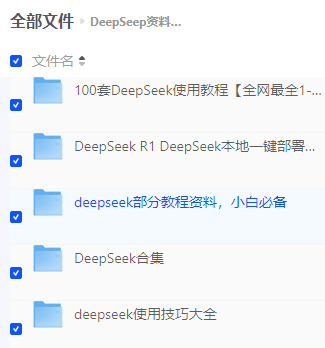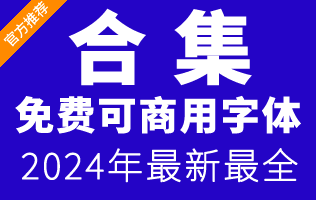Unity引擎开发:VR渲染技术_(20).VR开发中的常见问题与解决方法_unity开发 vr大空间 建模需要注意的
VR开发中的常见问题与解决方法
在虚拟现实(VR)开发中,开发者经常会遇到各种技术挑战和问题。这些问题可能会影响游戏的性能、用户体验和视觉效果。本节将详细介绍一些常见的VR开发问题及其解决方法,帮助开发者提高开发效率和游戏质量。
1. 画面延迟和卡顿
1.1 原理
画面延迟和卡顿是VR开发中最常见的问题之一。这些问题通常由以下原因引起:
-
渲染性能不足:VR应用需要在每秒输出至少90帧(FPS),以确保流畅的用户体验。如果帧率低于这个标准,用户可能会感到晕动症。
-
网络延迟:对于多人在线VR应用,网络延迟可能导致画面不同步。
-
输入响应延迟:如果用户的输入不能及时反映在画面上,用户体验会大打折扣。
-
资源加载问题:大型资源的加载可能会导致短暂的卡顿。
1.2 解决方法
1.2.1 优化渲染性能
减少绘制调用(Draw Calls)
-
原理:绘制调用是指引擎向GPU发送渲染指令的次数。过多的绘制调用会增加GPU的负担,导致性能下降。
-
方法:使用批处理(Batching)技术减少绘制调用。Unity提供了动态批处理(Dynamic Batching)和静态批处理(Static Batching)两种方式。
// 为静态批处理标记对象public class StaticBatchingExample : MonoBehaviour{ void Start() { // 标记所有静态对象 StaticBatchingUtility.Combine(GameObject.FindGameObjectsWithTag(\"Static\")); }}使用低多边形模型
-
原理:高多边形模型会增加渲染负担,降低帧率。
-
方法:使用低多边形模型或优化高多边形模型。
// 通过脚本优化模型public class ModelOptimization : MonoBehaviour{ void Start() { // 获取模型的Mesh MeshFilter meshFilter = GetComponent<MeshFilter>(); Mesh mesh = meshFilter.sharedMesh; // 优化模型 mesh.Optimize(); }}减少阴影计算
-
原理:阴影计算是渲染中的一个高成本操作,尤其是对于复杂的场景。
-
方法:减少阴影投射物体的数量,使用阴影贴图(Shadow Map)技术,或降低阴影质量。
// 通过脚本动态调整阴影质量public class ShadowOptimization : MonoBehaviour{ void Start() { // 获取当前的Quality Settings QualitySettings currentSettings = QualitySettings.GetQualityLevel(); // 调整阴影质量 QualitySettings.SetQualityLevel(currentSettings - 1, true); }}1.2.2 优化网络延迟
使用预测同步技术
-
原理:预测同步技术通过预测用户的行为来减少网络延迟的影响。
-
方法:实现客户端预测和服务器验证。
// 客户端预测示例public class PlayerMovement : NetworkBehaviour{ [SyncVar] private Vector3 serverPosition; private Vector3 predictedPosition; void Update() { if (isLocalPlayer) { // 预测位置 predictedPosition += Input.GetAxis(\"Horizontal\") * Time.deltaTime * 5f; predictedPosition += Input.GetAxis(\"Vertical\") * Time.deltaTime * 5f; // 设置预测位置 transform.position = predictedPosition; // 发送位置到服务器 CmdSendPosition(predictedPosition); } else { // 同步服务器位置 transform.position = Vector3.Lerp(transform.position, serverPosition, Time.deltaTime * 10f); } } [Command] void CmdSendPosition(Vector3 position) { serverPosition = position; RpcUpdatePosition(serverPosition); } [ClientRpc] void RpcUpdatePosition(Vector3 position) { if (!isLocalPlayer) { serverPosition = position; } }}优化网络传输数据
-
原理:减少网络传输的数据量可以降低网络延迟。
-
方法:使用压缩技术,减少不必要的数据传输。
// 使用压缩技术优化数据传输public class NetworkDataCompression : MonoBehaviour{ [SerializeField] private NetworkIdentity networkIdentity; void Start() { if (networkIdentity != null && networkIdentity.isServer) { StartCoroutine(SendCompressedData()); } } private IEnumerator SendCompressedData() { while (true) { // 获取数据 byte[] data = GetGameData(); // 压缩数据 byte[] compressedData = CompressData(data); // 发送压缩后的数据 networkIdentity.connectionToClient.Send(\"GameData\", compressedData); yield return new WaitForSeconds(0.1f); } } private byte[] GetGameData() { // 获取游戏数据 return new byte[] { 1, 2, 3, 4, 5, 6, 7, 8, 9, 10 }; } private byte[] CompressData(byte[] data) { // 使用GZip压缩数据 using (MemoryStream output = new MemoryStream()) { using (GZipStream gzip = new GZipStream(output, CompressionLevel.Optimal)) { gzip.Write(data, 0, data.Length); } return output.ToArray(); } }}1.2.3 优化输入响应延迟
减少输入缓冲区
-
原理:输入缓冲区可能会导致输入延迟。
-
方法:减少输入缓冲区的大小,提高输入响应速度。
// 减少输入缓冲区示例public class InputOptimization : MonoBehaviour{ void Update() { // 直接获取输入 float horizontalInput = Input.GetAxis(\"Horizontal\"); float verticalInput = Input.GetAxis(\"Vertical\"); // 应用输入 transform.Translate(horizontalInput * Time.deltaTime * 5f, 0, verticalInput * Time.deltaTime * 5f); }}使用异步输入处理
-
原理:异步输入处理可以减少输入延迟,提高响应速度。
-
方法:使用异步任务处理输入。
// 异步输入处理示例public class AsyncInputHandling : MonoBehaviour{ private Task<float> horizontalInputTask; private Task<float> verticalInputTask; void Start() { horizontalInputTask = Task.Run(() => GetInputAsync(\"Horizontal\")); verticalInputTask = Task.Run(() => GetInputAsync(\"Vertical\")); } void Update() { // 获取异步输入结果 float horizontalInput = horizontalInputTask.Result; float verticalInput = verticalInputTask.Result; // 应用输入 transform.Translate(horizontalInput * Time.deltaTime * 5f, 0, verticalInput * Time.deltaTime * 5f); // 重新启动任务 horizontalInputTask = Task.Run(() => GetInputAsync(\"Horizontal\")); verticalInputTask = Task.Run(() => GetInputAsync(\"Vertical\")); } private async Task<float> GetInputAsync(string axisName) { await Task.Delay(1); // 模拟异步延迟 return Input.GetAxis(axisName); }}1.2.4 优化资源加载
使用资源预加载
-
原理:资源预加载可以减少运行时的加载延迟。
-
方法:在游戏启动时预加载常用资源。
// 资源预加载示例public class ResourcePreloading : MonoBehaviour{ [SerializeField] private string[] resourcesToPreload; void Start() { StartCoroutine(PreloadResources()); } private IEnumerator PreloadResources() { foreach (string resourcePath in resourcesToPreload) { // 加载资源 GameObject resource = Resources.Load<GameObject>(resourcePath); // 检查资源是否加载成功 if (resource != null) { Debug.Log(\"Preloaded resource: \" + resourcePath); } else { Debug.LogWarning(\"Failed to preload resource: \" + resourcePath); } yield return new WaitForSeconds(0.1f); } }}使用异步资源加载
-
原理:异步资源加载可以避免主线程被阻塞,减少卡顿。
-
方法:使用
AssetBundle和WWW类异步加载资源。
// 异步资源加载示例public class AsyncResourceLoading : MonoBehaviour{ [SerializeField] private string assetBundleUrl; void Start() { StartCoroutine(LoadResourceAsync()); } private IEnumerator LoadResourceAsync() { // 下载AssetBundle WWW www = new WWW(assetBundleUrl); yield return www; // 加载AssetBundle AssetBundle assetBundle = www.assetBundle; if (assetBundle != null) { // 异步加载资源 AssetBundleRequest request = assetBundle.LoadAssetAsync<GameObject>(\"MyModel\"); yield return request; // 获取加载的资源 GameObject model = request.asset as GameObject; if (model != null) { Instantiate(model, Vector3.zero, Quaternion.identity); } else { Debug.LogWarning(\"Failed to load resource: MyModel\"); } // 卸载AssetBundle assetBundle.Unload(false); } else { Debug.LogWarning(\"Failed to load AssetBundle from URL: \" + assetBundleUrl); } }}2. 视觉效果问题
2.1 原理
视觉效果问题是VR开发中的另一个关键问题。这些问题可能会影响游戏的沉浸感和用户体验。常见的视觉效果问题包括:
-
分辨率不一致:不同设备的分辨率可能不同,导致画面质量不一。
-
视野角度(FOV)不一致:不同设备的FOV设置可能不同,影响用户的视觉体验。
-
色差和亮度问题:不同设备的显示特性可能导致色差和亮度不一致。
-
抗锯齿(AA)和后处理效果:抗锯齿和后处理效果可以提高画面质量,但也可能增加性能负担。
2.2 解决方法
2.2.1 适配不同分辨率
动态调整分辨率
-
原理:根据设备的能力动态调整分辨率,以平衡性能和画面质量。
-
方法:使用
Screen类调整分辨率。
// 动态调整分辨率示例public class ResolutionAdaptation : MonoBehaviour{ void Start() { // 获取设备的推荐分辨率 Resolution recommendedResolution = Screen.currentResolution; // 设置分辨率 Screen.SetResolution(recommendedResolution.width, recommendedResolution.height, true); }}使用多分辨率渲染
-
原理:在不同设备上使用不同分辨率的渲染,以优化性能。
-
方法:使用
RenderTexture类实现多分辨率渲染。
// 多分辨率渲染示例public class MultiResolutionRendering : MonoBehaviour{ [SerializeField] private Camera mainCamera; [SerializeField] private RenderTexture lowResRenderTexture; [SerializeField] private RenderTexture highResRenderTexture; void Start() { // 根据设备性能选择分辨率 if (IsHighPerformanceDevice()) { mainCamera.targetTexture = highResRenderTexture; } else { mainCamera.targetTexture = lowResRenderTexture; } } bool IsHighPerformanceDevice() { // 根据设备性能选择分辨率 return SystemInfo.deviceType == DeviceType.Desktop && SystemInfo.graphicsDeviceType == GraphicsDeviceType.Direct3D11; }}2.2.2 适配不同视野角度(FOV)
动态调整FOV
-
原理:根据设备的推荐FOV设置动态调整相机的FOV。
-
方法:使用
Camera类调整FOV。
// 动态调整FOV示例public class FOVAdaptation : MonoBehaviour{ [SerializeField] private Camera vrCamera; void Start() { // 获取设备的推荐FOV float recommendedFOV = GetRecommendedFOV(); // 设置FOV vrCamera.fieldOfView = recommendedFOV; } float GetRecommendedFOV() { // 根据设备类型选择推荐的FOV if (SystemInfo.deviceType == DeviceType.Handheld) { return 80f; } else { return 110f; } }}2.2.3 优化色差和亮度问题
使用色差校正
-
原理:通过色差校正技术调整不同设备的显示效果。
-
方法:使用
ColorCorrectionCurves类实现色差校正。
// 色差校正示例public class ColorCorrection : MonoBehaviour{ [SerializeField] private Camera vrCamera; [SerializeField] private ColorCorrectionCurves colorCorrectionCurves; void Start() { // 启用色差校正 colorCorrectionCurves.enabled = true; // 选择预设的色差校正曲线 colorCorrectionCurves.SetPreset(ColorCorrectionCurves.Preset.NightVision); }}动态调整亮度
-
原理:根据环境光线动态调整画面亮度,提高视觉效果。
-
方法:使用
Light类调整亮度。
// 动态调整亮度示例public class BrightnessAdjustment : MonoBehaviour{ [SerializeField] private Light mainLight; void Update() { // 获取环境光线强度 float ambientLight = GetAmbientLight(); // 调整亮度 mainLight.intensity = Mathf.Lerp(mainLight.intensity, ambientLight, Time.deltaTime * 2f); } float GetAmbientLight() { // 模拟环境光线强度 return Random.Range(0.5f, 1.5f); }}2.2.4 优化抗锯齿(AA)和后处理效果
使用抗锯齿技术
-
原理:抗锯齿技术可以减少画面的锯齿感,提高视觉效果。
-
方法:使用
Antialiasing类实现抗锯齿。
// 抗锯齿示例public class AntiAliasing : MonoBehaviour{ [SerializeField] private Camera vrCamera; void Start() { // 启用抗锯齿 vrCamera.antialiasing = true; }}优化后处理效果
-
原理:后处理效果可以增强画面效果,但也可能增加性能负担。
-
方法:根据设备性能选择合适的后处理效果。
// 优化后处理效果示例public class PostProcessingOptimization : MonoBehaviour{ [SerializeField] private PostProcessVolume postProcessVolume; void Start() { // 根据设备性能选择后处理效果 if (IsHighPerformanceDevice()) { EnablePostProcessingEffects(true); } else { EnablePostProcessingEffects(false); } } bool IsHighPerformanceDevice() { // 根据设备性能选择后处理效果 return SystemInfo.deviceType == DeviceType.Desktop && SystemInfo.graphicsDeviceType == GraphicsDeviceType.Direct3D11; } void EnablePostProcessingEffects(bool enable) { // 启用或禁用后处理效果 postProcessVolume.enabled = enable; }}3. 用户体验问题
3.1 原理
用户体验问题是VR开发中不可忽视的一部分。这些问题可能会影响用户的舒适度、沉浸感和游戏流畅度。常见的用户体验问题包括:
-
晕动症:用户在移动或旋转时可能会感到晕动症。
-
交互问题:不直观的交互设计可能会影响用户的操作体验。
-
UI设计问题:不合适的UI设计可能会影响用户的信息获取。
-
音效问题:不合适的音效设计可能会影响用户的沉浸感。
3.2 解决方法
3.2.1 减少晕动症
使用平滑移动
-
原理:平滑移动可以减少用户在快速移动时的不适感。
-
方法:使用插值技术实现平滑移动。
// 平滑移动示例public class SmoothMovement : MonoBehaviour{ [SerializeField] private float smoothTime = 0.1f; private Vector3 velocity = Vector3.zero; void Update() { // 获取用户输入 float horizontalInput = Input.GetAxis(\"Horizontal\"); float verticalInput = Input.GetAxis(\"Vertical\"); // 计算目标位置 Vector3 targetPosition = transform.position + new Vector3(horizontalInput, 0, verticalInput) * Time.deltaTime * 5f; // 平滑移动 transform.position = Vector3.SmoothDamp(transform.position, targetPosition, ref velocity, smoothTime); }}限制移动速度
-
原理:过快的移动速度可能导致晕动症。
-
方法:设置合理的移动速度限制。
// 限制移动速度示例public class LimitedMovement : MonoBehaviour{ [SerializeField] private float maxSpeed = 3f; private Vector3 velocity = Vector3.zero; void Update() { // 获取用户输入 float horizontalInput = Input.GetAxis(\"Horizontal\"); float verticalInput = Input.GetAxis(\"Vertical\"); // 计算目标速度 Vector3 targetVelocity = new Vector3(horizontalInput, 0, verticalInput) * 5f; // 限制速度 velocity = Vector3.ClampMagnitude(velocity + (targetVelocity - velocity) * Time.deltaTime * 5f, maxSpeed); // 应用速度 transform.Translate(velocity * Time.deltaTime, Space.World); }}3.2.2 优化交互设计
使用自然交互
-
原理:自然交互设计可以让用户感觉更加真实和自然。通过使用手部追踪和手势识别技术,用户可以更直观地与虚拟环境进行互动,从而提高用户体验。
-
方法:使用手部追踪和手势识别技术。
// 自然交互示例public class NaturalInteraction : MonoBehaviour{ [SerializeField] private GameObject handModel; void Update() { // 获取手部追踪数据 Vector3 handPosition = GetHandPosition(); Quaternion handRotation = GetHandRotation(); // 更新手部模型的位置和旋转 handModel.transform.position = handPosition; handModel.transform.rotation = handRotation; // 检测手势 if (IsGripping()) { // 执行抓取操作 GripObject(); } } Vector3 GetHandPosition() { // 模拟手部追踪位置 return new Vector3(Input.GetAxis(\"Hand_X\"), Input.GetAxis(\"Hand_Y\"), Input.GetAxis(\"Hand_Z\")); } Quaternion GetHandRotation() { // 模拟手部追踪旋转 return Quaternion.Euler(Input.GetAxis(\"Hand_Roll\"), Input.GetAxis(\"Hand_Pitch\"), Input.GetAxis(\"Hand_Yaw\")); } bool IsGripping() { // 模拟手势检测 return Input.GetButton(\"Grip\"); } void GripObject() { // 模拟抓取操作 Debug.Log(\"Gripping object\"); }}提供明确的反馈
-
原理:明确的反馈可以增强用户的互动体验,让用户知道他们的操作是否成功。
-
方法:使用视觉、音频和触觉反馈。
// 提供明确反馈示例public class InteractionFeedback : MonoBehaviour{ [SerializeField] private AudioSource audioSource; [SerializeField] private ParticleSystem particleSystem; [SerializeField] private HapticDevice hapticDevice; void Update() { // 检测用户交互 if (Input.GetButtonDown(\"Interact\")) { // 触觉反馈 hapticDevice.Vibrate(0.5f, 0.2f); // 音频反馈 audioSource.Play(); // 视觉反馈 particleSystem.Play(); } }}3.2.3 优化UI设计
使用3D UI
-
原理:3D UI可以更好地融入虚拟环境,提高用户的沉浸感。
-
方法:创建3D UI元素并放置在虚拟环境中。
// 3D UI示例public class ThreeDUI : MonoBehaviour{ [SerializeField] private GameObject uiElement; void Start() { // 将UI元素放置在用户视野范围内 uiElement.transform.position = Camera.main.transform.position + Camera.main.transform.forward * 2f; } void Update() { // 更新UI元素的位置以跟随用户头部 uiElement.transform.position = Camera.main.transform.position + Camera.main.transform.forward * 2f; }}优化文字显示
-
原理:文字在VR中可能会显得模糊或难以阅读,需要特别优化。
-
方法:使用更高分辨率的文字,增加文字的对比度,或使用距离适应的文字大小。
// 优化文字显示示例public class TextOptimization : MonoBehaviour{ [SerializeField] private TextMesh textMesh; void Start() { // 设置更高的分辨率 textMesh.font.material.mainTexture.filterMode = FilterMode.Point; // 增加文字的对比度 textMesh.color = Color.black; // 使用距离适应的文字大小 StartCoroutine(AdjustTextSize()); } private IEnumerator AdjustTextSize() { while (true) { // 计算距离 float distance = Vector3.Distance(Camera.main.transform.position, textMesh.transform.position); // 调整文字大小 textMesh.transform.localScale = new Vector3(1f, 1f, 1f) * Mathf.Clamp01(1f / distance); yield return new WaitForSeconds(0.1f); } }}3.2.4 优化音效设计
使用3D音效
-
原理:3D音效可以增强用户的沉浸感,使音效听起来更具空间感。
-
方法:使用
AudioSource的3D音效属性。
// 3D音效示例public class ThreeDSound : MonoBehaviour{ [SerializeField] private AudioSource audioSource; void Start() { // 启用3D音效 audioSource.spatialBlend = 1f; audioSource.rolloffMode = AudioRolloffMode.Linear; } void Update() { // 更新音频源的位置以跟随物体 audioSource.transform.position = transform.position; }}动态调整音效
-
原理:根据用户的动作和环境动态调整音效,可以提高音效的真实感。
-
方法:使用脚本动态调整音效的音量和频率。
// 动态调整音效示例public class DynamicSound : MonoBehaviour{ [SerializeField] private AudioSource audioSource; void Update() { // 获取用户的动作 float horizontalInput = Input.GetAxis(\"Horizontal\"); float verticalInput = Input.GetAxis(\"Vertical\"); // 动态调整音效的音量 audioSource.volume = Mathf.Clamp01(Vector3.Magnitude(new Vector3(horizontalInput, 0, verticalInput)) * 0.5f); // 动态调整音效的频率 audioSource.pitch = Mathf.Clamp01(1f + Vector3.Magnitude(new Vector3(horizontalInput, 0, verticalInput)) * 0.2f); }}4. 性能优化问题
4.1 原理
性能优化是VR开发中的核心问题之一。高性能的VR应用可以提供更流畅的用户体验,减少晕动症和卡顿。常见的性能优化问题包括:
-
CPU和GPU负载过高:复杂的计算和渲染任务可能导致CPU和GPU负载过高。
-
内存管理不当:内存泄漏和不必要的内存占用会影响应用的稳定性和性能。
-
优化算法选择不当:使用不合适的算法可能导致性能瓶颈。
4.2 解决方法
4.2.1 降低CPU和GPU负载
优化脚本
-
原理:脚本中的复杂计算和频繁调用可能会增加CPU负载。
-
方法:使用更高效的算法,减少不必要的计算。
// 优化脚本示例public class ScriptOptimization : MonoBehaviour{ [SerializeField] private GameObject[] objectsToOptimize; void Start() { // 优化对象的初始化 foreach (GameObject obj in objectsToOptimize) { OptimizeObject(obj); } } void OptimizeObject(GameObject obj) { // 优化对象的计算 obj.GetComponent<Rigidbody>().drag = 0.5f; }}使用LOD(Level of Detail)技术
-
原理:LOD技术可以根据物体与摄像机的距离动态调整模型的细节级别,减少渲染负担。
-
方法:使用Unity的LOD Group组件。
// 使用LOD示例public class LODExample : MonoBehaviour{ [SerializeField] private GameObject[] lodModels; [SerializeField] private float[] lodDistances; void Update() { // 计算与摄像机的距离 float distance = Vector3.Distance(Camera.main.transform.position, transform.position); // 根据距离选择合适的LOD模型 for (int i = 0; i < lodDistances.Length; i++) { if (distance <= lodDistances[i]) { lodModels[i].SetActive(true); for (int j = 0; j < lodModels.Length; j++) { if (j != i) { lodModels[j].SetActive(false); } } break; } } }}4.2.2 优化内存管理
避免内存泄漏
-
原理:内存泄漏会导致内存占用不断增加,影响应用的性能和稳定性。
-
方法:使用对象池技术,避免频繁创建和销毁对象。
// 对象池示例public class ObjectPool : MonoBehaviour{ [SerializeField] private GameObject pooledObject; [SerializeField] private int poolSize = 10; private List<GameObject> pool; void Start() { // 初始化对象池 pool = new List<GameObject>(); for (int i = 0; i < poolSize; i++) { GameObject obj = Instantiate(pooledObject); obj.SetActive(false); pool.Add(obj); } } public GameObject GetPooledObject() { // 从对象池中获取对象 foreach (GameObject obj in pool) { if (!obj.activeInHierarchy) { return obj; } } // 如果对象池已满,扩展对象池 GameObject newObj = Instantiate(pooledObject); newObj.SetActive(false); pool.Add(newObj); return newObj; } public void ReturnPooledObject(GameObject obj) { // 将对象返回对象池 obj.SetActive(false); }}减少不必要的内存占用
-
原理:不必要的内存占用会增加内存压力,影响应用性能。
-
方法:及时释放不再使用的资源,使用轻量级的数据结构。
// 减少不必要的内存占用示例public class MemoryOptimization : MonoBehaviour{ [SerializeField] private Texture2D[] textures; void Start() { // 释放不再使用的纹理 foreach (Texture2D texture in textures) { if (texture != null) { Resources.UnloadAsset(texture); } } }}4.2.3 选择合适的优化算法
使用空间分区技术
-
原理:空间分区技术可以减少场景中需要处理的对象数量,提高性能。
-
方法:使用Unity的
NavMesh或自定义的空间分区算法。
// 空间分区示例public class SpatialPartitioning : MonoBehaviour{ [SerializeField] private GameObject[] objectsInScene; [SerializeField] private float partitionSize = 10f; private Dictionary<Vector3, List<GameObject>> partitions = new Dictionary<Vector3, List<GameObject>>(); void Start() { // 初始化空间分区 foreach (GameObject obj in objectsInScene) { Vector3 position = obj.transform.position; Vector3 partitionKey = new Vector3(Mathf.Floor(position.x / partitionSize), Mathf.Floor(position.y / partitionSize), Mathf.Floor(position.z / partitionSize)) * partitionSize; if (!partitions.ContainsKey(partitionKey)) { partitions[partitionKey] = new List<GameObject>(); } partitions[partitionKey].Add(obj); } } void Update() { // 获取摄像机的当前位置 Vector3 cameraPosition = Camera.main.transform.position; Vector3 partitionKey = new Vector3(Mathf.Floor(cameraPosition.x / partitionSize), Mathf.Floor(cameraPosition.y / partitionSize), Mathf.Floor(cameraPosition.z / partitionSize)) * partitionSize; // 只处理当前分区内的对象 if (partitions.ContainsKey(partitionKey)) { foreach (GameObject obj in partitions[partitionKey]) { // 处理对象 // 例如,更新动画、物理状态等 } } }}使用多线程
-
原理:多线程可以将计算任务分散到多个线程中,减少主线程的负担。
-
方法:使用
Task和Thread类实现多线程计算。
// 多线程示例public class MultiThreadingExample : MonoBehaviour{ [SerializeField] private int numTasks = 4; void Start() { // 启动多线程任务 for (int i = 0; i < numTasks; i++) { int taskId = i; Task.Run(() => PerformTask(taskId)); } } void PerformTask(int taskId) { // 执行任务 Debug.Log(\"Task \" + taskId + \" is running on thread \" + System.Threading.Thread.CurrentThread.ManagedThreadId); // 模拟计算任务 for (int i = 0; i < 1000000; i++) { float result = Mathf.Sqrt(i); } // 任务完成 Debug.Log(\"Task \" + taskId + \" is completed\"); }}5. 总结
在VR开发中,开发者需要关注多个方面的问题,包括画面延迟和卡顿、视觉效果问题、用户体验问题以及性能优化问题。通过优化渲染性能、网络延迟、输入响应延迟和资源加载,可以显著提高游戏的流畅度和用户体验。同时,适配不同分辨率、视野角度、色差和亮度问题,以及优化抗锯齿和后处理效果,可以提升视觉效果。此外,优化交互设计、UI设计和音效设计,可以进一步增强用户的沉浸感和舒适度。最后,通过降低CPU和GPU负载、优化内存管理和选择合适的优化算法,可以提高应用的整体性能。
希望本文能帮助VR开发者解决常见的技术问题,提高开发效率和游戏质量。


